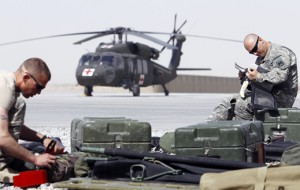“OH GOD! THERE SO MUCH BLOOD! HE’S GOING TO DIE!”
Internal bleeding. This type of injury is one of the most troublesome injuries due to a limited time frame a person has before they are treated. However, thanks to advancement in medical science, the Defence Advanced Research Project Agency (DARPA) has launched its Wound Stasis System to develop the, “DARPA foam“.
The “DARPA foam” is a special injectable polymer foam that slows internal bleeding in the abdominal area of the body by having the foam mould around the internal organs to slow the bleeding long enough to have the patient seek professional medical treatment.

– The image above shows how the DARPA foam is inserted into the abdominal cavity, and how it moulds around nearby internal organs
– Images by Dennis Sinyakov, via technologyreview
Above, the video shows how the foam works. (Username: DARPAtv)
The foam works by first injecting it in the abdominal cavity in its two liquid phases. As the liquids mix, it will form two chemical reactions. The first reaction will make the foam expand thirty times its original volume and surround nearby internal organs while conforming to the surfaces of injured tissues. The second reaction will then harden the foam so that blood flow will be restricted, and will slow down blood loss. After the foam has been properly formed, the next step would be in removing it, which based on previous tests, is remarkably easy. Surgeons were able to remove the hard foam from their patients in less than a minute.
This new life saving technology that can reduce blood loss by six-fold and increase the life expectancy of a patient to three hours post-injury, should be given full support from everyone within the medical field. Even though this technology was originally developed for military use, hopefully after more tests and more positive results, this technology can one day be found in every ambulances in the world.
– Martin Lee

